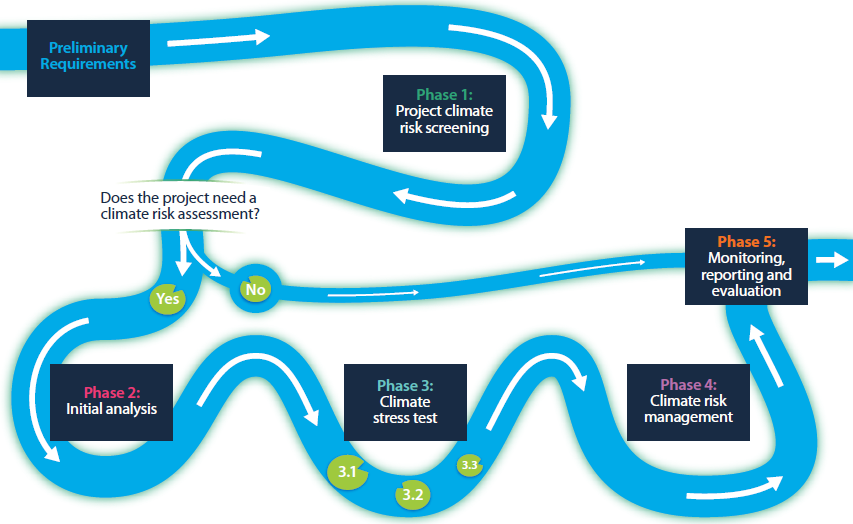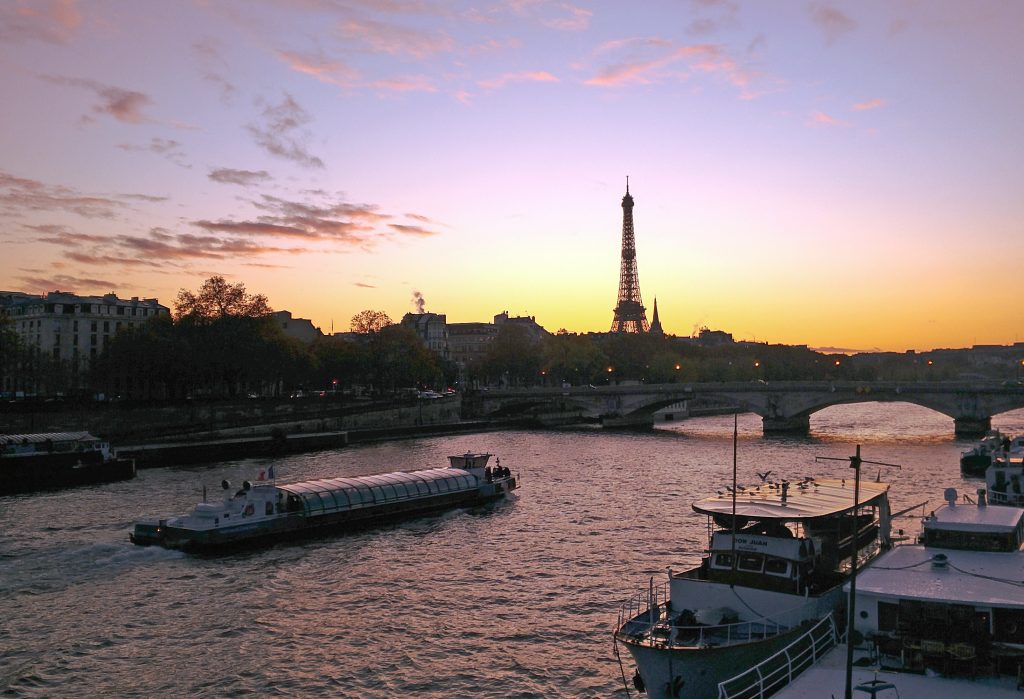What is more enriching than holiday? A professional stay abroad! Tractebel’s Young Professionals Programme (YPP) really does open an incredible world of opportunity for engineers like me: fresh out of university and ready to put my talent to work. One week after my return from Uganda on a major hydroelectric project I blogged about earlier, I was off to Paris for a months-long stay at our office. My focus: knowledge exchange inside Tractebel’s different offices and learning about climate change resilience in hydropower projects.
Engineering Hydropower Solutions for Climate Resilience
On my first day in the office the hydrology experts at Tractebel France, Marine Riffard-Chenet and Kristin Gilroy, welcomed me warmly. They introduced me to the team and gave a tour of the office and my working space. Already from that moment the atmosphere felt dynamic and active.
I was spending my days at the office learning about how climate change can be considered in hydropower projects. The main project for which this assessment was needed was the Sahofika Hydropower Project in Madagascar. With an installed capacity of 210 MW, this project is expected to play a major role in addressing the island state’s longstanding electricity supply issues. With the guidance of my French colleagues I got deeper into the subject and acquired knowledge on climate resilience by applying the IHA guidelines to the Sahofika Project.
The process involved a comprehensive assessment of the risks and opportunities for the Sahofika plant, including technical, financial, safety and socio-environmental factors across the project. Our engineers and project stakeholders needed to work hand-in-hand to develop sustainable solutions, which are resilient to expected long-term climatic conditions. Engineering solutions to water scarcity and extreme weather events from climate change proved the biggest obstacle. In terms of climate change impacts, our solutions need to be location specific since some areas might have droughts while others might have floods. We need to enable Sahofika to resiliently respond to it all.
A big picture of a Climate Change Assessment…

The process of hydropower sector climate resilience guide. Source: IHA Hydropower sector climate resilience guide
The approach described in the IHA Hydropower sector climate resilience guide can be summarized in 5 phases. In each phase the potential risks and opportunities for the project in front of climate change are updated.
In the first phase the project vulnerability to climate change is determined qualitatively: by considering characteristics as the location, operation mode, technical design and socio-environmental components. The following points outline the approach.
Will it be necessary to do the climate assessment?
No: Go straight to phase 5, which means monitoring, reporting and evaluation.
Yes: Phase 2 to 4 are needed to analyze and test before it is ready for the last phase.
In phase 2, a base scenario is defined. It represents the climate conditions for which the initial design was made. Along with this baseline, the historical and projected climatic data (e.g. precipitation and temperature) is analyzed.
Which design is the most resilient to climatic changes?
During phase 3 we analyze the project performance considering different future climate scenarios.
That’s the phase the Sahofika project was in when I joined the team. At this state we define plausible ranges for the climatic parameters (e.g. temperature or average rainfall) in the different scenarios.
For the project we were interested in finding out how to cover the “missing energy”, the energy that could not be generated due to for example: decrease in normal precipitation. During the 4th phase the measures, either operational or technical modifications, to be taken are identified. Afterwards, the proposed measures and their future impact are once again tested. For Sahofika, we considered options such as additional storage and an alternative energy source. As soon as the climate risk management plan is developed, the designed solution (i.e. the most climate resilient) is ready for phase 5: monitoring, evaluation and reporting of the project. This guarantees the resilience of the project during operation.
At the end the most viable solutions are given to our clients to facilitate the decision-making process.
We are in the process of understanding how our planet is changing and more specifically how it will impact the water availability in the future.
Resilience to climate change is the key for sustainable solutions for our future! Our goal is to provide energy and water wherever it is needed by taking location specific needs and benefits into account, while excluding social risks.
There is still a lot of research to be done. This requires us to keep moving forward and be innovative in solutions!
It was a fantastic professional experience for me! I was challenged to produce real-world engineering solutions for a cause – adapting to the climate crisis – that I’m deeply motivated by. All with world-class experts at our Paris office who are also great fun to work alongside.
Speaking of Paris… the city of lights was the perfect place to inspire the creative thinking I needed for this project. Evenings spent together with colleagues and friends are my best memories. We met outside the office and talked about professional and private goals, life and work.

Fueling my Creativity in Paris
Being involved in big projects like this we also started thinking about the small actions we do to fight climate change together. It was inspiring being surrounded by people who are motivated by the same things. Our discussions helped the ideas grow in our heads and bringing innovative solutions to the project.
After the working day, I strolled down the streets full of history, cafés, restaurants, galleries, museums, theaters, monuments and people. Every day was different with non-stop action.
“Non-stop action”… you might have guessed it: my visit took place before the Corona pandemic. At that time, the city showed itself from its most vibrant side. I learned a lot about its history while exploring each “arrondissement” (Paris districts) and experienced the French passion for fromage, baguette and vin (cliché: yes, true: completely).
The city of lights with all its different faces and impressions felt very inspirational to me. But life in big cities like Paris also includes intense traffic, which we are rethinking in many places due to the experience we made during the pandemic. The growing volume of traffic worldwide is one of the negative factors which pushes climate change dramatically. With our work on projects such as the one in Madagascar we want to mitigate this.
From Wheels to Heels
I knew there was a strike announced. “Well, how long could this take? How bad can it be?”, I thought… it ended up lasting for one and a half months. During the strike there was nearly no public transport running. Even walking during rush hour was hard due to the bicycles, motorcycles, rollers and even the pedestrians (who in Paris walk at a higher speed than anywhere else in Europe). “La grève” made it the full metropolis experience and even like that, the city life didn’t stop.
Only the lockdown and the many home offices suddenly changed the scenery on the streets. But by then I was already back in my local (home) office.
My stay in Paris marks the end of year one of this two-year programme for Tractebel’s young professionals. I can’t wait to see what’s next!
What are your actions to fight climate change? If you go by bike instead of taking the car, or buy less plastic wrapped food – every step is a step into the right direction! And maybe you would also like to join Tractebel to engineer a zero-carbon future with me?

